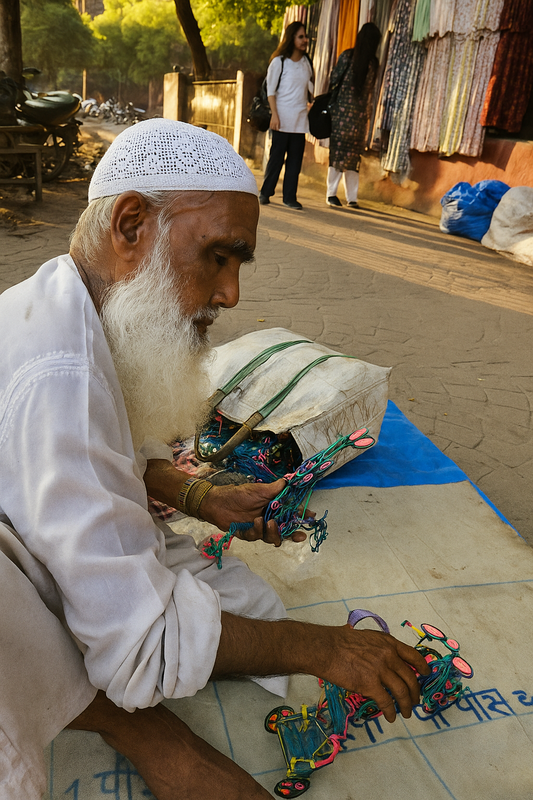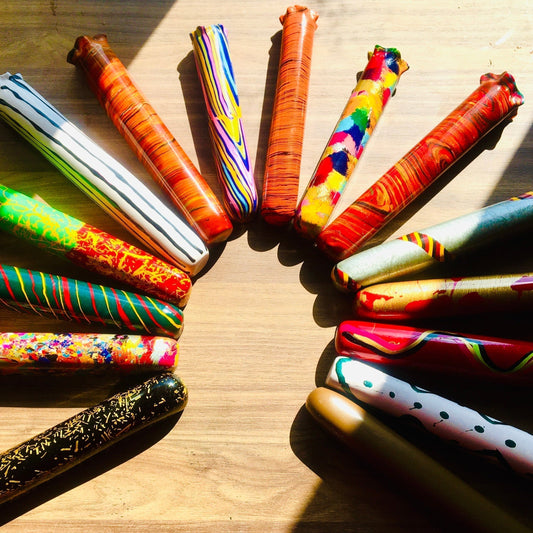The What, Why, and How.
What’s in a Name?
The name The Buraansh Local is inspired by the Buraansh, a vibrant red rhododendron flower native to the Himalayan region of India. Symbolizing beauty, vitality, and cultural richness, this flower carries deep roots in Indian tradition. Interestingly, it thrives in both India and Sweden, where I now live, creating a beautiful, poetic link between my heritage and the place I call home. Just as the Buraansh flourishes across diverse landscapes, The Buraansh Local aims to bridge two worlds—preserving India’s ancient craftsmanship while introducing it to a broader, global audience.
The Buraansh flower, blooming in remote corners and cherished for both its symbolic and medicinal value, represents the very essence of the crafts we celebrate. These traditions, rich in history yet often hidden from the mainstream, are the heart of this project. The word “Local” emphasizes our deep connection to the communities where these crafts are born—where authenticity is rooted in every stitch, stroke, and movement. It reflects our commitment to working directly with artisans, ensuring that their craftsmanship is preserved in all its raw, unrefined beauty.
The name also encapsulates my vision of grounding the project in local heritage while offering it to the world. The Buraansh Local is not simply about creating products; it is about providing a platform for the stories of artisans to be shared, celebrated, and cherished. By connecting the rich cultural heritage of India with the minimalist elegance of European design, we offer a unique fusion of tradition, craftsmanship, and modern sensibilities—a blend that resonates across cultures and speaks to people all over the world.
Why is it Personal?
This vision is personal because it’s intertwined with the fabric of my own life—woven through memories, experiences, and the world I grew up in. In India, craftsmanship was not just a practice; it was a way of life. From the quiet hum of my mother crocheting or knitting at home, to the cobbler mending shoes by the roadside, the potter shaping terracotta at the end of the street, and my aunt weaving baskets from straw—craft was embedded in the rhythm of daily existence. My father’s inventive jugaad with metal further deepened my connection to this hands-on world of creation. Everywhere I looked, there was skill, tradition, and a quiet beauty in the mundane.
I didn’t realize how deeply this world of craftsmanship had rooted itself in me until later. I pursued jewellery design, immersed myself in the industry for eight years, and later founded my own jewellery label, PinkBasket. Through this journey, I encountered incredible artisans whose mastery left me speechless, and once again, I was drawn into the world of craftsmanship. I could see their soul in every piece they created.
A quest to understand Indian arts from a broader perspective led me to Konstfack, where I hoped to see India’s crafts through new eyes. It was during my thesis that I connected with the forgotten crafts—those not yet recognized outside of India—and I felt a deep responsibility to share them with the world.
It was my research into lac, a traditional material with cultural significance, that truly shifted my perspective. The more I explored its history, the more I realized the urgency of preserving these crafts and finding new ways to reimagine them for a contemporary audience. This project became my mission—not just to create but to ensure that these artisans and their stories are honored, respected, and heard globally.
The Buraansh Local is not just a project; it’s my journey, my passion, and my attempt to create a space where these crafts are not forgotten but are celebrated, evolved, and shared across the world. It is an ode to the craftsmanship that shaped me and to the artisans who continue to shape the world with their hands.
How is it Relevant?
The Buraansh Local is more than just a project—it’s a cultural movement, a bridge that connects the heritage of Indian craftsmanship with contemporary design. It celebrates the diversity of India's lesser-known crafts while ensuring that their stories reach a global audience, starting with Sweden and India.
At its heart is a unique collaboration between indigenous artisans, whose knowledge has been passed down through generations, and me, an artist with a university-trained perspective. Both these viewpoints are equally valuable—the wisdom of the ancestors and the fresh vision that comes with formal education. Together, they breathe new life into ancient traditions, preserving the craftsmanship while reimagining it for the modern world.
Through direct partnerships with artisans, I stay grounded in traditional methods, but also unlearn the conventional uses of these crafts to offer something new. These artisans embody knowledge passed down through their lineage, something no formal education can replicate. For me, the process of working alongside them is just as valuable as the final product. It is through this collaboration that we honor the art, the artisans, and the journey behind every creation.
Each piece is more than an object—it is a story, woven from the hands of artisans and transformed by the creative reinterpretation that merges tradition and modernity. By blending Indian craftsmanship with European minimalism, The Buraansh Local creates products that speak across cultural boundaries, forging a deeper connection between the customer and the heritage embedded in each piece.
But this project is not just about producing handcrafted goods—it is about creating a cultural platform where these ancient crafts are honored, respected, and reimagined for a contemporary world. Through this partnership, The Buraansh Local ensures that these crafts continue to thrive, evolve, and inspire in a global context, bridging the past with the present and the local with the global.


